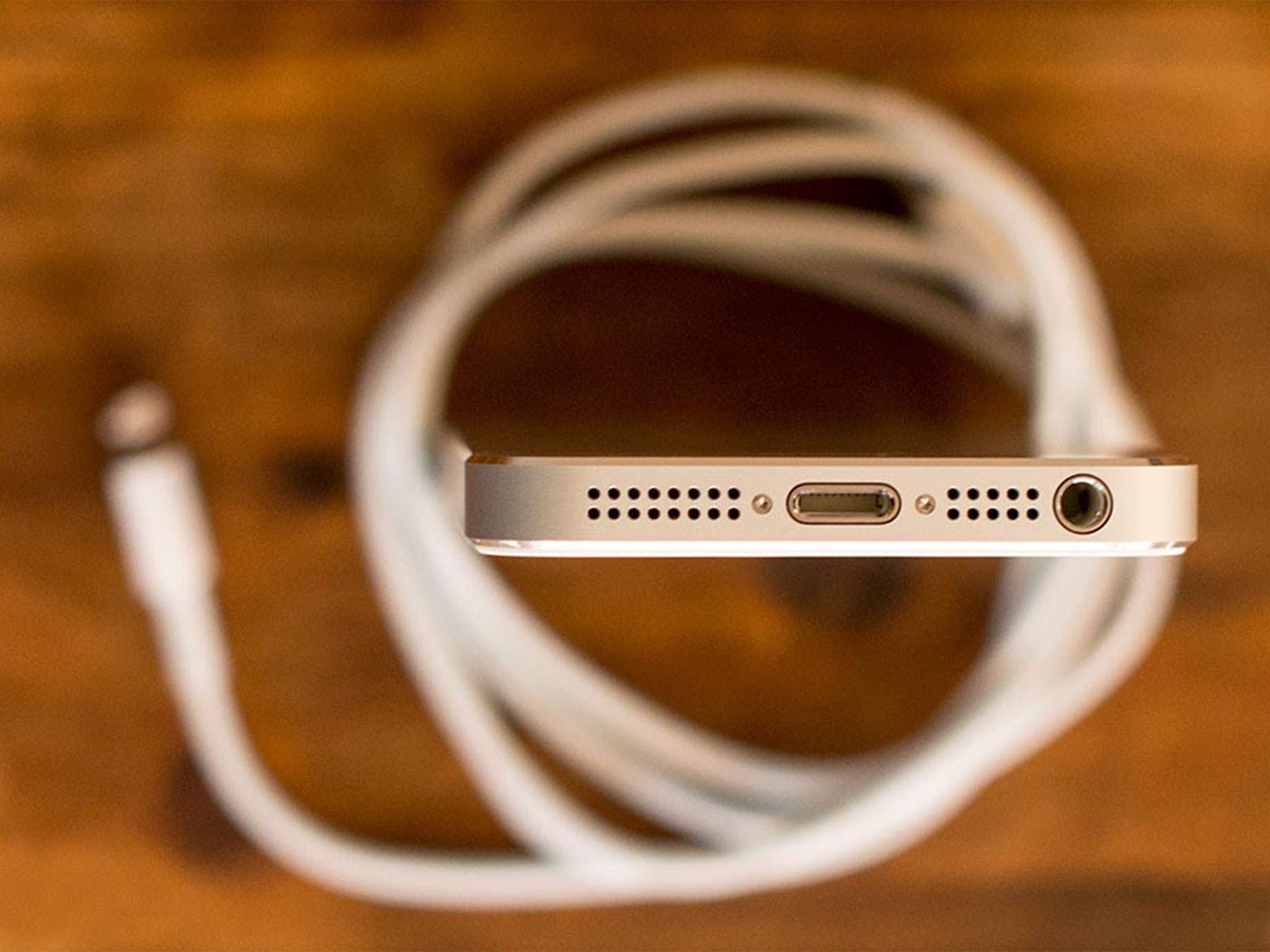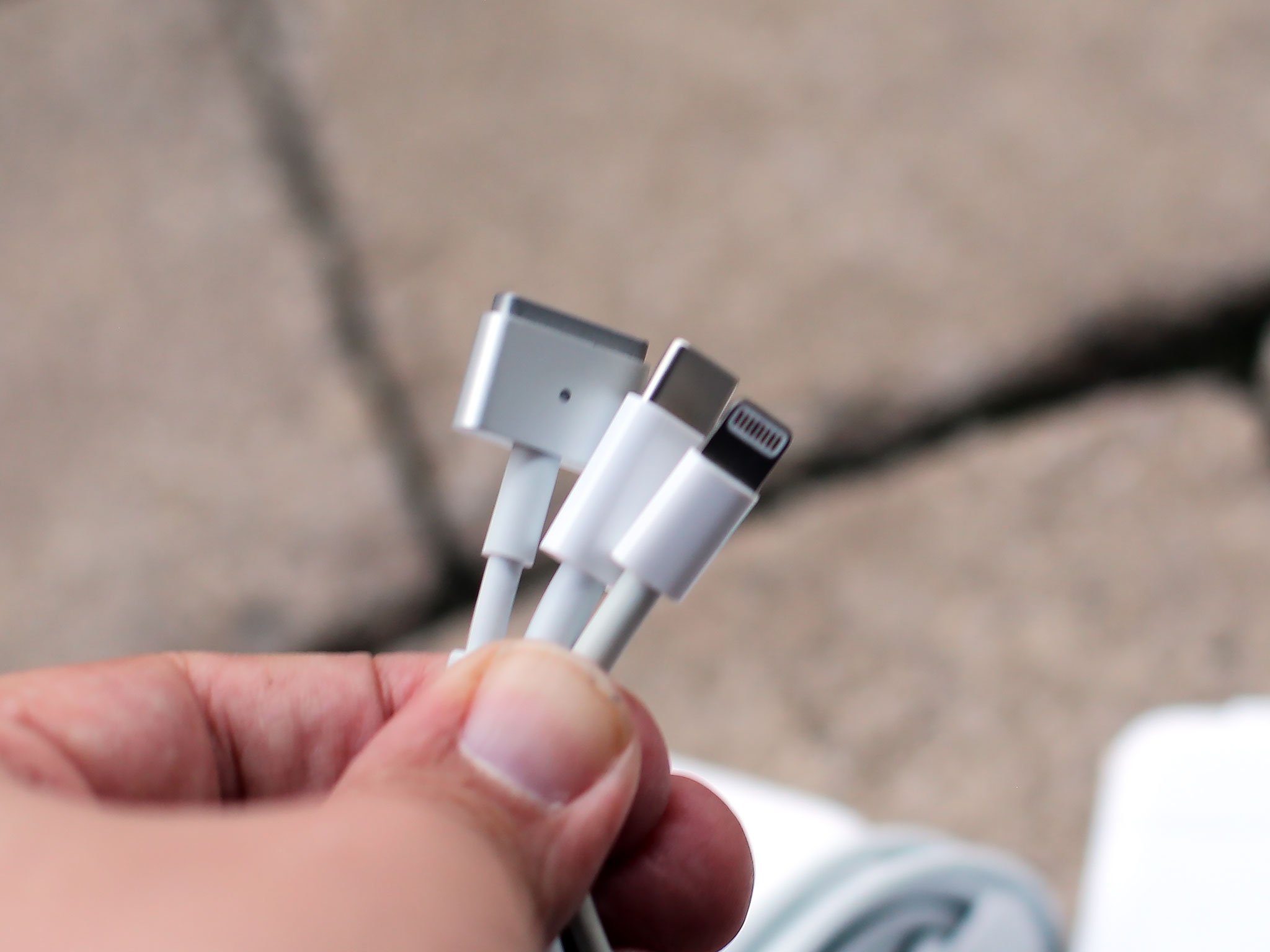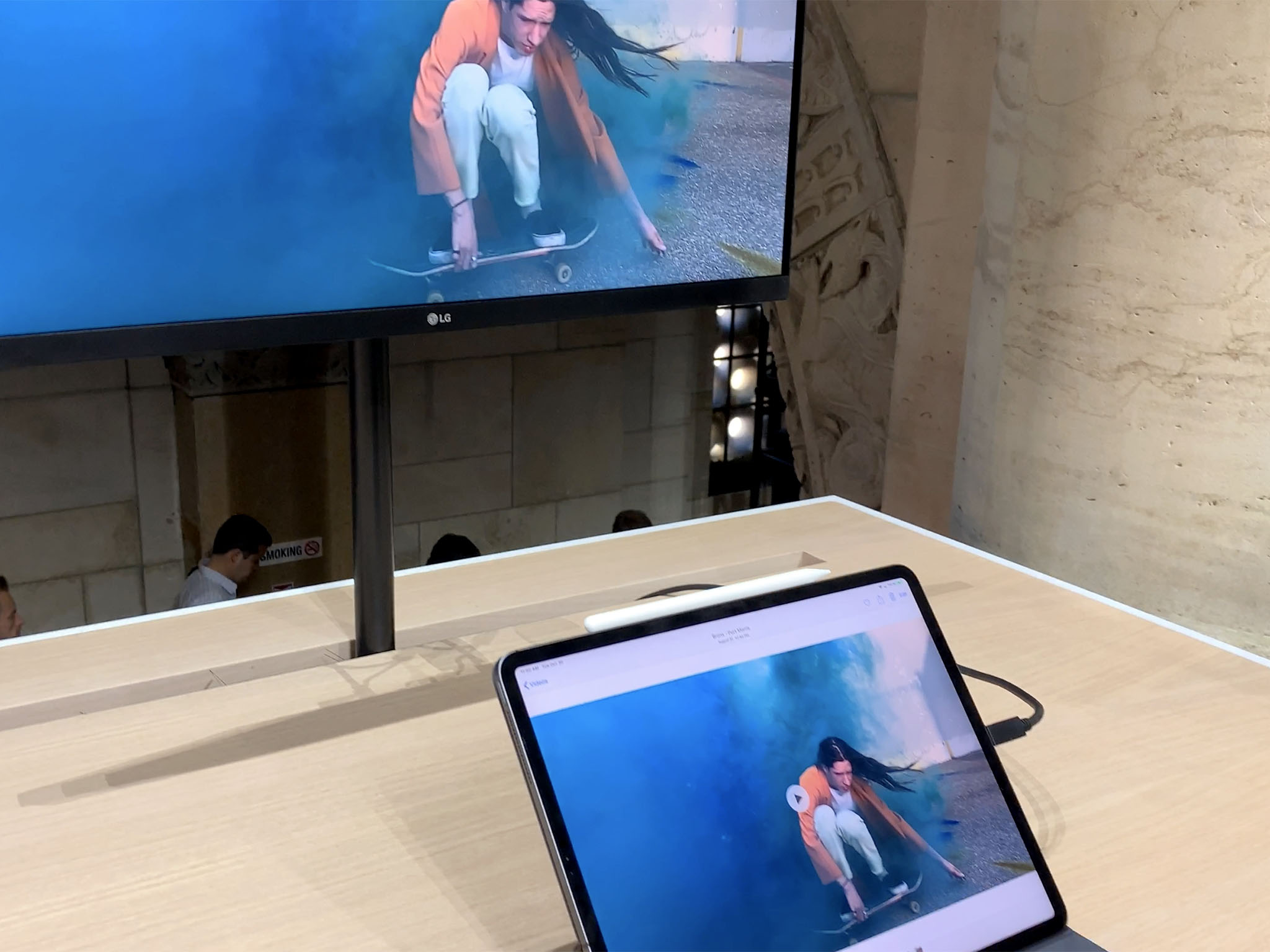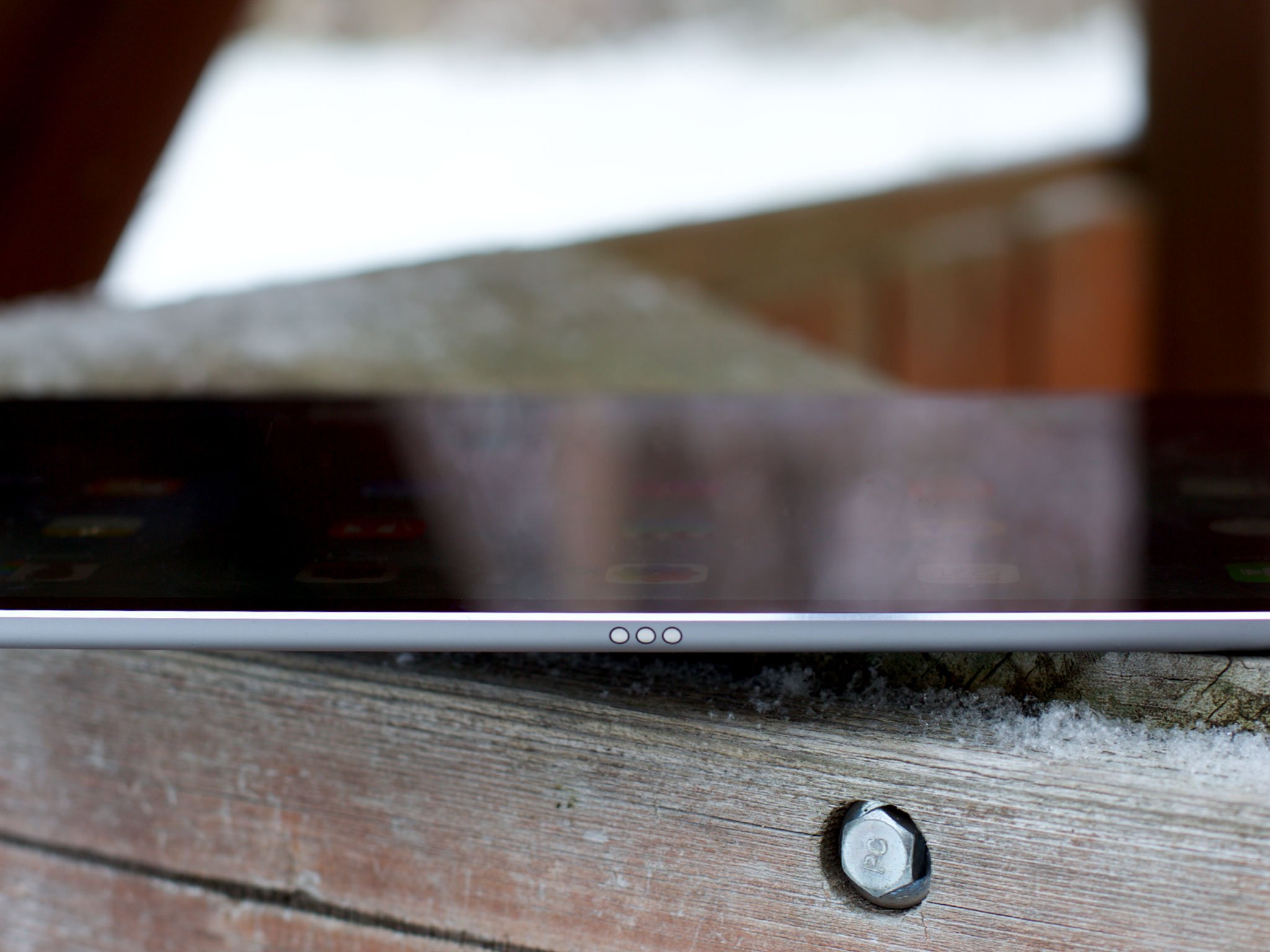Why iPhone 12 still won't be going USB-C

Apple started switching the Mac over with the 12-inch MacBook in 2015. They only gave it one port but… but… that one port was glorious USB-C, the way nature and nerds intended.
Then, the very next year, in 2016, Apple switched the entire MacBook Pro lineup to USB-C as well. The entire lineup. But left the iPhone on Lightning. And… how could they? How could they have the Mac and iPhone on different connectors? Who cares if it'd had been that way since the 30-pin Dock connector killed Firewire on the iPod in ought 3. We needed, nay… we demanded a better, brighter future.
In 2017, the iPhone X came with an all new, all modern design, the perfect opportunity for an even more modern connector to go with it. But… no.
In 2018, the iPad Pro switched to USB-C. So what if it was meant to be a laptop alternative, we wanted that same alternative for the iPhone as well. But… still no.
Then, in 2019, the iPhone itself went Pro, blessED Pro, which, like the MacBook Pro and iPad Pro just had to mean USB-C Pro, no?
Well, turns out, No. Still No… Biggest troll of the decade — no.
So, now… now… on the eve of the iPhone 12 and potentially the next big redesign, dare we nerds hope, dare we nerds dream, that Apple will finally, finally ditch Lightning for USB-C?
Master your iPhone in minutes
iMore offers spot-on advice and guidance from our team of experts, with decades of Apple device experience to lean on. Learn more with iMore!
Phone 12 (2020): Rumors, release date, price, features, and more
Why did Apple go with Lightning instead of USB-C?
Back around 2010, Apple was planning the iPhone 5 and it was going to be so thin that the then-current connector, the good old-fashioned 30-pin Dock, would no longer fit inside. So, Apple needed something new.
Now, their technology team was already working with Intel and others on what would become USB-C, but because it was going to be an open standard, it was going to take a long time to finalize. A real long time. And Apple decided they just couldn't wait.
So, Apple took many of the same principles as USB-C, made the actual plug a little smaller by putting the pins on the outside instead of the inside, and came up with Lightning. A name that neatly paired against the Thunderbolt protocol they'd been working on with Intel for the Mac.
By September 2012, Lightning was ready to ship. The spec for USB-C, by contrast, wasn't even finalized until August of 2014, almost two years later, and the first USB-C device, Apple's own 12-inch MacBook, wasn't even announced until March of 2015, two and a half years after Lightning shipped on the iPhone.
Basically forever in the age of gadgets.
Then why didn't Apple switch to USB-C when it was ready?
Connector transitions are a big deal. Apple moved the iPod from FireWire to Dock in April of 2003 but it was such a nascent industry back then that only the early adopters were really affected.
When Apple moved the iPhone, iPad, and iPod touch to Lightning in the fall 2012, almost a decade later, it was much, much more painful for far, far more people.
Many of whom had already bought a bunch of Dock cables and accessories over the years that suddenly didn't fit their new phones. And, to make matters worse, Apple completely failed to have adapters and cables available at launch, forcing not just early adopters but a lot of regular people doing regular upgrades to wait days and weeks before they could even plug back into their existing chargers and their audio systems at home, work, or in the car.
The anger was real. Let me know in the comments if you remember it!
So, the idea of making another connector transition just 3 years later, with the iPhone 6s in the fall of 2015, was just a non-starter.
I mean, Lightning offered a ton of advantages over the 30-pin Dock, including sure, being smaller, but also being pure digital, so Apple wouldn't have to to constantly hack the pins anymore, and being symmetrical, so you didn't have to try and plug it in, fail, flip it over, fail again, flip it over again, and then maybe succeed.
The biggest advantage USB-C offered back then — being a standard — was also a disadvantage.
While Apple could control Lightning cables and accessories to the point where any customer could be relatively certain anything they bought would work, the initial USB-C rollout was a nightmare by comparison, with confusing and poor-quality cables flooding the market to the point that the entire internet suckled themselves to the Amazon reviews of a lone Google engineer, who bought and tested every one of them, bless his nerdy heart, because for way too long a time, it was the only way of knowing what was safe to buy and what might just burn it all down.
So, if you even asked mainstream customers to go through yet another transition and buy yet another set of new adapters, especially ones as potentially problematic as USB-C was at the time, they'd cut you. And no court in the world would convict them.
If Lightning is so great, why didn't Apple use it on the Mac as well?

For a very brief period of time, both the Mac and the iPod had FireWire connectors and everything was in perfect balance, as all things should be.
But then the iPod went Dock, and Apple never bolted a 30-pin connector onto the Mac, and so ended the brief, beautiful era of one plug to rule them all.
By the time Lightning came along, Apple really wasn't thinking about unifying connectors, like at all. They were thinking about optimizing them.
See, Lightning really was meant for mobile devices. It wasn't fast, topping out at USB 2.0 speeds and only ever going to USB 3.0 for special use cases like the Camera Kit accessory. It didn't drive a lot of power either, just 5 watts with the iPhone adapter and 13 watts with the iPad adapter.
Which is fine for small devices with limited file systems, accessories, and relatively tiny batteries that, if subjected to the heat of high-watt, high-speed charging, would just hemorrhage battery health.
Because, yeah, there's no magic. Power management is way better now than it was then, but with the various kinds of high speed charging, you are literally trading current convenience for future capacity.
That focus on changing small devices is why Apple eventually did expand Lightning to everything from the terrific Magic Trackpad and still oh-so-awkward Magic Mouse, to the Apple Watch dock almost no one uses, the Siri Remote for Apple TV almost no one likes, the AirPods pretty much everyone likes, the EarPods included in the box — for now — and most everything Beats.
The Mac, though, with a traditional file system, a vast array of peripherals including mass storage devices with power requirements, much bigger batteries, much higher power draw, and a tendency to be plugged in more often and for longer periods of time, simply needed more than Lightning could provide. At least by itself.
And while yeah, sure, Apple could have kept MagSafe and gone with Lightning for accessories, they also wanted to ship the the 12-inch MacBook Pro with just one port, which meant that one port had to do it all, and the MacBooks Pro with 2 to 4 of those do-it-all ports.
And while, yeah, sure, proprietary connectors are great for quality control, they're terrible for interoperability, and when you're not iPhone scale but Mac scale, you need to work with everything the PC market has to offer, from printers to external drives.
Which is why Apple also kept working on USB-C with the standards committee and Thunderbolt with Intel.
A connector that would let the Mac grow support to the currently fastest USB 3.1 Gen 2 and Thunderbolt 3 speeds, and 96 watt 16-inch MacBook Pro power adapter.
Even if, yes, beyond the early quality control issues, it still made USB-C like 4x more confusing when it came to figuring out which cables only supported USB-C, which ones supported PD, or power delivery for higher-level charging, and which supported Thunderbolt 3 for faster data speeds.
But that meant you couldn't plug an iPhone into a Mac with the cable Apple was including in the box!
True. True! And that's personally frustrated and frakked me over at all the absolute worst times.
But, most iPhone customers didn't and don't use a Mac. They use Windows. And, most of the Windows machines have USB-A ports, either because they're older, the companies that made them took forever to switch to USB-C, or they still offer both.
So, for the vast majority of people, having a Lightning to USB-A cable in the box was just never a problem. Having Lightning to USB-C, now that would have been a problem. Again, the they'll cut you kind of problem.
Of course, Apple could have included a USB-A to USB-C adapter in the various MacBook boxes, the way they included a 3.5mm to Lightning adapter in iPhone boxes for a couple of years, which would have solved the problem for everyone. Especially for Apple's most enthusiastic, early adopter, full-on ecosystem customers.
That would have been the considerate thing to do.
OK, then why did Apple switch the iPad Pro to USB-C?

The original iPad Pro, announced in September of 2015, had a Lightning connector, just like every iPad since 2012. In October of 2018, though, Apple gave the iPad Pro a modern redesign that included changing the Lightning connector to USB-C.
It was part of a much greater change within Apple, though. A conceptual and philosophical change that took the iPad Pro from being more of an alternative to laptops to being more of a laptop alternative. In other words, something to do a few of the same jobs better, to something to do most of the same jobs, just differently.
And it included other changes like having its operating system renamed iPadOS, getting a Files app, and most recently, full on Trackpad support. Basically, all the finalies for all the traditional laptop users.
And, all of that, required a more laptop-style connector. In other words, it required a USB-C connector.
Two now, if you include the charging-only port on the new Magic Keyboard.
So why didn't Apple switch the iPhone to USB-C when it got its modern redesign or when it went Pro?
I wish they had. Just like I wish they had when they did the iPhone X redesign. But I'm a nerd.
For all the reasons I just went over, from not wanting to force another big connector change on the massive mainstream customer base, not just after Dock to Lightning but after losing the 3.5mm headphone Jack and just leaving Lightning, to keeping things simple for that massive mainstream customer base, to not believing the iPhone needs Mac-style throughput or power delivery.
Isn't it really because Apple is rolling in Lightning licensing revenue?
Sure, Apple gets a trickle of additional revenue from licensing Lightning through the MFi, or made for iPhone program.
But it's not like they licensed it to anything big, like other phone companies or appliance companies.
So, it ends up being a drop in the bucket compared to the umpteen billions of dollars the iPhone bring in every quarter.
I mean, Apple probably blows more than the MFi profits on chamfering edges, jet blacking the finish, or making glossy vs. matte camera bumps every year.
But it gives Apple something they value even more than money — control.
So when will the iPhone go USB-C?
I'd love it if the iPhone 12 Pro shipped with USB-C instead of Lightning, just like the iPad Pro does.
Apple has Pro and consumer brands for almost every product now, just like Steve Jobs' original four quadrant grid set up lo those many years ago.
So, stick with Lightning on the consumer end, so no one has to replace their existing cables or accessories, but switch to USB-C on the Pro end, where after decades of serial and parallel and USB and Firewires 400 and 800 and VGA and DVI and DisplayPort and Thunderbolts up to 3, we're used to sucking up just exactly that kind of pain and living with basically all the dongles.
Especially for Pro devices, being able to to transfer data faster and charge faster over a wire, just makes the kind of sense that does.
Which is also probably, poetically, why we'll never see it.
I mean, never say never, but never.
So, what... portess phones?
Step by step, year by year, Apple seems to be intentionally, inextricably, moving towards a wireless world.
Remote CD on the original MacBook Air way back in 2008. Since then, AirPlay, AirDrop, AirPods — basically all the AirThings — and all the continuity features.
In general, removing buttons and ports, while reducing some portion of the customer base to a burning fury of malice and hate, also reduces points of potential hardware failure.
It's why HTC ditched the headphone jack in the original Android phone long before courage was even a glimmer in Apple's eye, and why most companies have ditched it since.
And why most of those same companies are working on ditching other buttons and ports too, using things like squeezable sides and capacitive buttons instead. Just like Apple virtualized the Home button starting with the iPhone 7.
Sure, you can make ports water resistant, but you can't force people to dry them off before plugging things into them, which can still cause corrosion, shorts, and other problems.
It's why the Apple Watch's mini Lightning port is sealed away and hidden in the band groove and the latest Apple TV's USB-C port is buried behind the Ethernet jack.
Of course, that creates it's own huge problem — how are customers supposed to restore or recover their phones if something goes wrong and they can't plug into a computer.
Having to take or send your watch or tv box in for a technician to do it is hella annoying. Having to take or send something as critical as your phone in, well, that's hella not going to happen.
And internet restore or recovery is just really, really hard. So hard, it doesn't seem like even Apple or Google can really ship it as a feature yet.
So, going portless probably isn't an option, at least not yet, and not even by the time Lightning's decade is up in 2020.
That's why there are rumors of Smart Connectors on the iPhone?

That's why there are rumors of Smart Connectors on the iPhone.
Originally introduced with the iPad Pro back in 2015 and updated with the redesign in 2018, it's flat mounted and has just three pins — power, data, and ground.
It can't do everything a Lightning connector can do, much less a USB-C connector, but in a world where the majority of functionality, including every day charging and data transfer, are handled over induction and wireless, the Smart Connector can be there in a pinch for physical charging, restore and recovery, and attaching to adapters for existing accessories, including audio at home, in the office, and in cars. Because, yeah, take away all the wired CarPlay connectors in existing cars, and we're right back to people cutting you.
Now, the iPad Pro with smart connector can drive things like the new Magic Keyboard, but it's not waterproof. And the iPhone Pro, assuming it's the first to switch over, would have to be. Otherwise, I mean, Apple may as well give it a flip screen.
But, assuming everything goes right, everyone who hates Lightning and wants to kill it just to watch it die might well get their wish, maybe as soon as next year or the decade-versary the year after.
Though without getting USB-C instead. You know what they say about being careful what you wish for…

Rene Ritchie is one of the most respected Apple analysts in the business, reaching a combined audience of over 40 million readers a month. His YouTube channel, Vector, has over 90 thousand subscribers and 14 million views and his podcasts, including Debug, have been downloaded over 20 million times. He also regularly co-hosts MacBreak Weekly for the TWiT network and co-hosted CES Live! and Talk Mobile. Based in Montreal, Rene is a former director of product marketing, web developer, and graphic designer. He's authored several books and appeared on numerous television and radio segments to discuss Apple and the technology industry. When not working, he likes to cook, grapple, and spend time with his friends and family.
